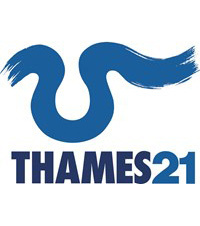Many thanks to Hobbs of Henley Ltd for facilitating this camera's location and capitally funding its installation. Established in 1870, Hobbs of Henley Ltd has maintained its reputation for providing exceptional hospitality on watercraft to its esteemed clientele. Henley holds global renown as a prominent hub for rowing, with the annual Henley Royal Regatta held on the renowned "Henley Reach," a naturally straight stretch of the river that was later artificially extended. The event gained its prestigious "Royal" status in 1851 when Prince Albert became its patron. Throughout history, Henley faced challenges during the Civil War, experiencing the presence of both conflicting parties. Notably, in 1688, William III, while en route to London, found respite in Henley, specifically at the recently rebuilt Fawley Court, where he received a delegation from the Lords.Henley's prosperity in the 17th and 18th centuries stemmed from its glass and malt manufacturing industries, as well as its trade in corn and wool. The River Thames offers a diverse angling experience, catering to serious match anglers, specimen hunters, and pleasure anglers alike, with an abundance of fish species ranging from roach and perch to barbel, chub, pike, and carp.Archaeological evidence indicates human habitation in Henley since the second century during the Romano-British period. The first substantial record of Henley as a settlement dates back to 1179 when King Henry II acquired land for construction purposes. In 1199, King John granted the manor of Benson and the town and manor of Henley to Robert Harcourt. The mention of a church in Henley appears in historical records from 1204, while the first reference to the town's bridge is found in 1234. By 1278, Henley is described as a hamlet of Benson with a chapel. The street layout likely took shape by the end of the 13th century. The Molyns family, who held the demesne of Henley as a crown property, received the grant in 1337, maintaining ownership for approximately 250 years.The existing Thursday market, believed to have been granted by King John's charter, has been in existence since at least 1269. However, the jurors of the 1284 assize expressed uncertainty regarding the Earl of Cornwall's authority to hold a market and fair in Henley. The Corpus Christi fair, as it exists today, received its charter from Henry VI. During the devastating Black Death pandemic of the 14th century, Henley suffered a tragic loss of 60% of its population. In 1485, a variation of its name appeared as "Henley up a Tamys."By the early 16th century, the town had expanded along the west bank of the Thames, encompassing Friday Street in the south to the northern Phyllis Court, incorporating Hart Street, New Street, Bell Street, and the Market Place. Henry VIII granted the titles of "mayor" and "burgess," and in 1568, the town was officially incorporated with a charter issued by Elizabeth I, subsequently replaced by one from George I in 1722.Henley faced hardships during the Civil War, enduring the impact of both warring factions. Moreover, in 1688, William III found solace in Henley on his march to London, seeking respite at the recently reconstructed Fawley Court and receiving a delegation from the Lords. The town's period of prosperity in the 17th and 18th centuries was attributed to its glass and malt manufacturing, as well as its trade in corn and wool. Henley-on-Thames supplied timber and grain to London. In 1790, a workhouse capable of accommodating 150 individuals was constructed at West Hill in Henley, later expanded to house 250 occupants as part of the Henley Poor Law Union workhouse.
Henley Bridge, an architectural gem comprising five arches, was erected in 1786 and holds the esteemed Grade I listing as a historic structure. In 2011, the bridge underwent extensive repairs totaling £200,000 following damage caused by the vessel "Crazy Love" in August 2010.






